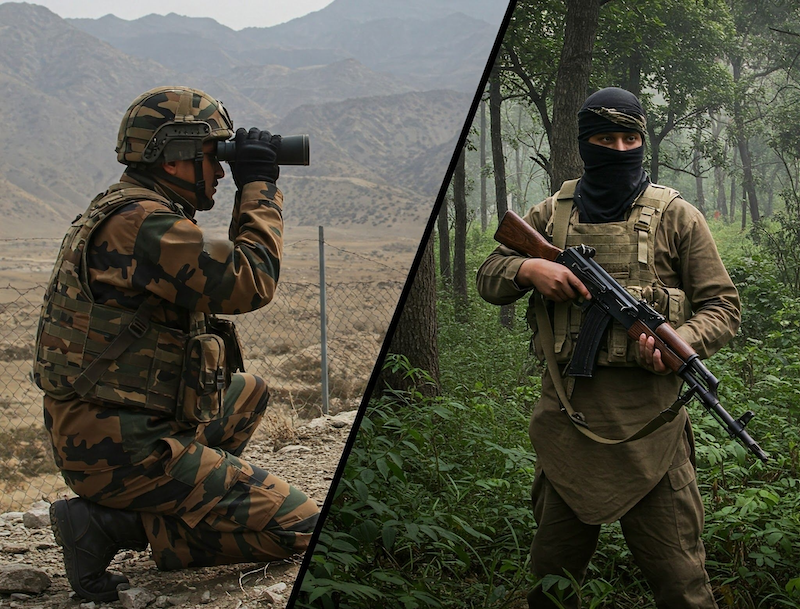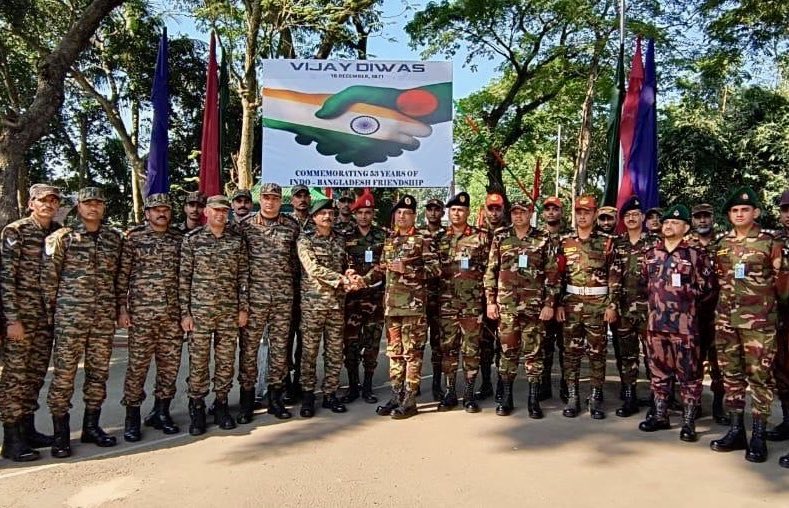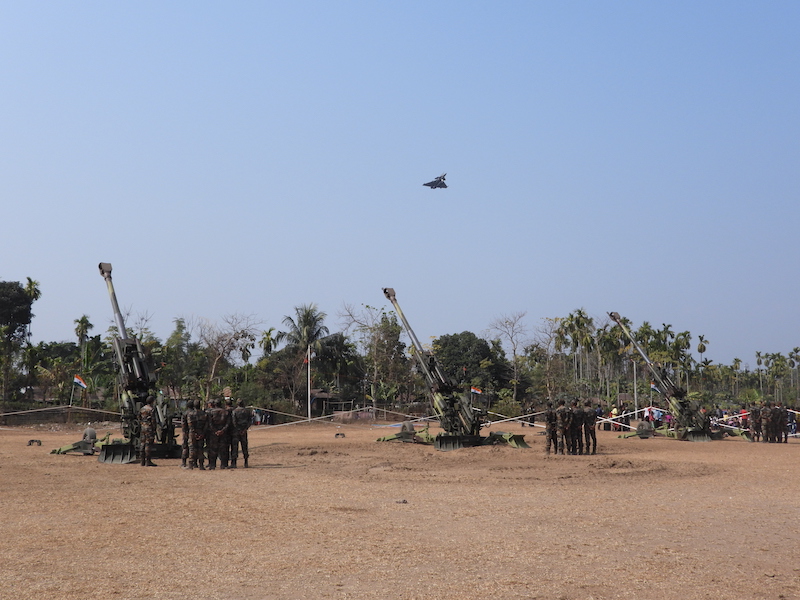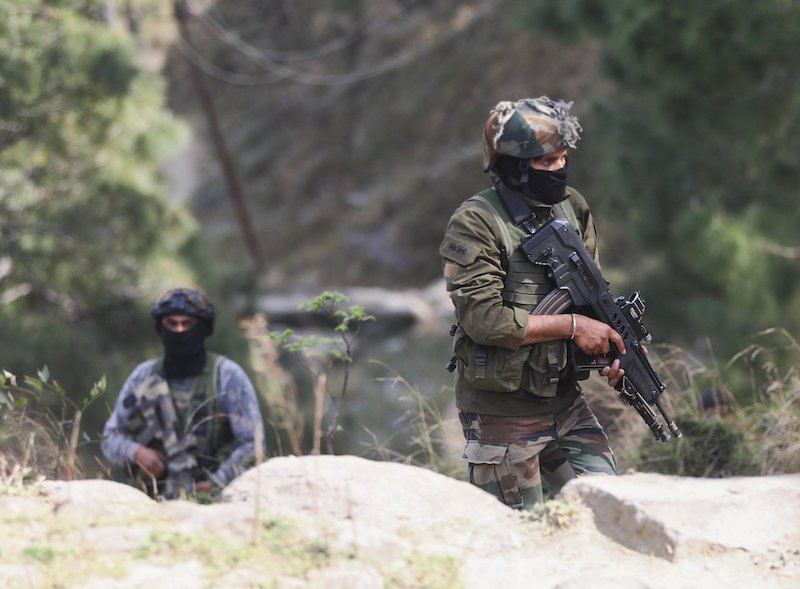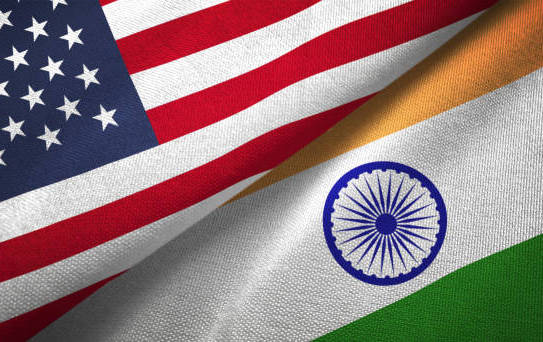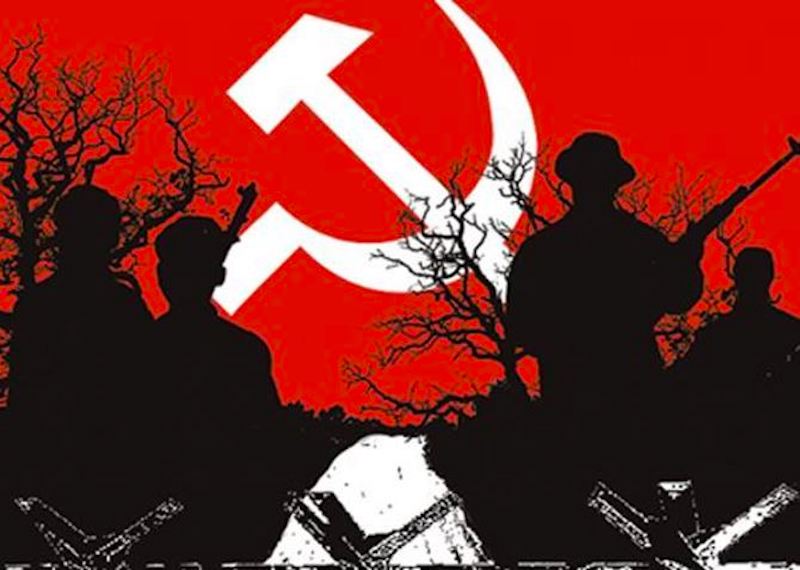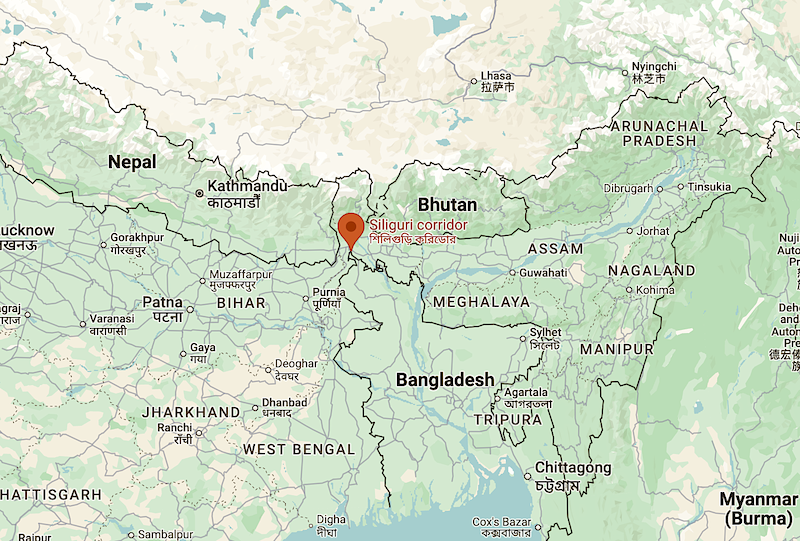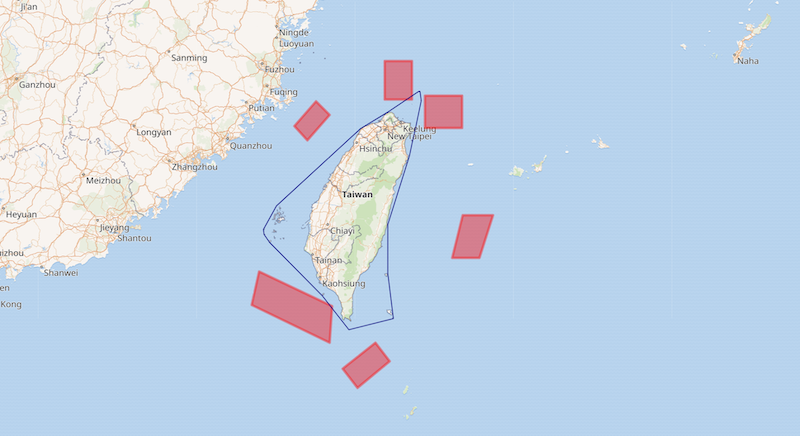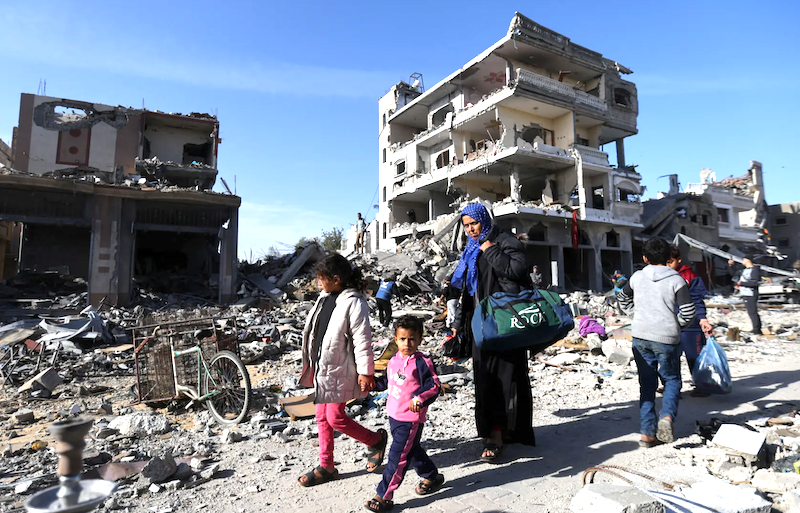 A neighbourhood in Khan Younis, south of Gaza Strip, destroyed by Israeli bombing. (Photo via X)
A neighbourhood in Khan Younis, south of Gaza Strip, destroyed by Israeli bombing. (Photo via X)
On October 7, heavily armed militants of the the Palestinian group, that governs the Gaza Strip launched a deadly raid on Israeli kibbutzim, military installations, Jewish settlements, and an ongoing open-air musical party - Supernova Sukkot Gathering – on the Jewish holiday of Shemini Atzeret near kibbutz Re’im, killing nearly 1,200 Israelis and taking around 240 hostages, including many civilians.
This triggered an unprecedented Israeli response against the besieged Palestinian enclave, which so far killed tens of thousands of Palestinian civilians, mostly children and women, and destroyed almost half of the civilian infrastructure, including hospitals, residential complexes, schools, and refugee camps, in Gaza while internally displacing almost the entire Palestinian people from their homes. According to the latest reports, over 21,000 Palestinian have been killed so far, out of which 9,000 are children. Many thousands more are feared dead and/or trapped under the rubble of flattened buildings.
The October 7 Hamas attack and the severity of Israel’s military retaliation on Gaza shook the entire world widening the chasm between supporters of Israel and the supporters of the Palestinian cause among the comity of nations. It also ensured that news of the developments of the Israel-Hamas war became the perpetual headline of global media since then.
Let us go back in time and find the root of the Israel-Arab conflict in general and the Israel-Palestine conflict in particular, which even after seven decades looks far from arriving at a peaceful solution.
Introduction
The roots of the Israel-Palestine conflict stretch back to the late 19th century when nationalist fervour swept through Europe. The Zionist movement, led by Theodor Herzl, sought to establish a Jewish homeland in Palestine. The Balfour Declaration in 1917 expressed British support for this vision, setting the stage for a collision with the longstanding Arab presence in the region.
The subsequent British Mandate from 1920 to 1948, marked by Jewish immigration, heightened tensions with the Arab population, leading to the 1936–1939 Arab revolt against British rule. The aftermath of World War II saw the establishment of the State of Israel in 1948, followed by the Six-Day War in 1967, resulting in Israel’s occupation of significant Arab territories.
Historical background
1. The rise of nationalist movements in the late 19th century:
The late 19th century saw the emergence of nationalist movements in Europe. The Zionist movement, led by Theodor Herzl, aimed to establish a Jewish homeland in Palestine. Herzl’s vision, expressed in “The Jewish State” (1896), gained momentum with the First Zionist Congress in 1897. This movement redefined Jewish identity, transitioning from religious or cultural affiliation to a national one.
2. The Balfour Declaration (1917):
After World War I, the British government sent Lord Balfour (Arthur James Balfour) in 1917 to grant the Zionists a part of Palestine as the “holy land” of the Jews. Lord Balfour gave the Balfour Declaration to the Jewish banker Lord Rothschild (Walter Rothschild) to pass it on to the Zionist leadership.
However, this was considered invalid by the UN’s predecessor League of Nations. The world body never ratified it, partly because they thought Britain had no right to give land it didn't legally possess to a third party alien to the region.
 The Balfour Declaration.
The Balfour Declaration.
Nonetheless, the Balfour Declaration expressed Britain’s support for a “national home for the Jewish people” in Palestine. This declaration, driven by diplomatic, political, and wartime considerations, set the stage for future conflicts over territory, identity, and self-determination.
British Mandate (1920–1948)
1. Jewish Immigration and Arab Tensions:
The British Mandate from 1920 to 1948 witnessed a significant increase in Jewish immigration, driven by the Zionist movement’s goal. This demographic shift heightened tensions between Jewish and Arab communities economically, culturally, and politically. The clash of nationalistic visions set the stage for the 1936–1939 Arab Revolt.
2. The 1936–1939 Arab Revolt:
The Arab Revolt, triggered by economic disparities, nationalist sentiments, and fears of losing political control, reflected widespread opposition to British rule and Jewish immigration. Despite internal divisions among Arab leaders, the revolt underscored the need for a comprehensive solution to address conflicting national aspirations.
Post-World War II and Partition (1947)
The aftermath of World War II and the Holocaust prompted global sympathy and support for a Jewish homeland. The United Nations’ partition plan in 1947 proposed independent Jewish and Arab states, with Jerusalem as an international city.
However, Arab states vehemently opposed the plan, leading to the Arab-Israeli War of 1948–1949. Israel’s declaration of independence and the ensuing conflict deepened animosities, shaping the protracted Israeli-Palestinian conflict.
The consequences of the Arab states’ rejection of the partition plan contributed to a cycle of violence and hostilities. Displaced Palestinian populations became central to the conflict, and historical grievances, territorial disputes, and competing national narratives complicated the path to peace. Despite various international initiatives, a comprehensive and lasting resolution remains elusive.
The Israel-Palestine conflict’s complexities lie in its historical evolution, rooted in competing national aspirations and geopolitical factors. Understanding this intricate history is crucial for navigating towards a more sustainable and just resolution.
1967 Six-Day War and occupation of Arab territories
The Six-Day War in 1967 reshaped the Middle East, with Israel’s victory leading to the occupation of the Sinai Peninsula and Gaza Strip from Egypt, the West Bank and East Jerusalem from Jordanian control, and the Golan Heights from Syria.
Following this, Israel started settling Jewish populations from Europe and the Americas in the occupied territories. These settlements became a major point of contention, driven by strategic, ideological, and demographic factors, obstructing peace negotiations and the two-state solution.
Oslo Accords (1990s)
The Oslo Accords of the 1990s aimed at achieving peace through mutual recognition and diplomatic negotiations between the Israelis and the Palestinians along with third parties. However, the initial optimism gave way to challenges such as the status of Jerusalem, the right of return for Palestinian refugees, and the assassination of the-then Israeli prime minister, Yitzhak Rabin, by a far-right Israeli Jew.
The breakdown of the peace process highlighted the complexities and deep-rooted challenges in the Israel-Palestine conflict.
Ongoing challenges
The ongoing challenges for a permanent peace between Israel and Palestine include the status of Jerusalem and the right of return for Palestinian refugees. Attempts to address these issues have proven elusive, contributing to the perpetuation of the conflict. Impediments to a two-state solution include deficit in mutual distrust, conflicting narratives, and the contentious issue of Israeli settlements in the West Bank, which is hindering the delineation of borders.
Recent developments (2022–2023)
International mediation efforts, led by the United States and involving the UN, the European Union, and regional players, aim to facilitate dialogue between Israelis and Palestinians. The normalization agreements between Israel and some Arab states, known as the Abraham Accords, have shifted regional alliances but introduced new complexities. Iran’s influence, major power dynamics, and non-state actors contribute to the evolving geopolitical context.
On October 7, 2023, Hamas launched a surprise attack on Israel, resulting in a significant escalation of the Israel-Hamas conflict. The attack saw thousands of rockets fired into Israel, leading to a high number of casualties and the seizure of hundreds of individuals as hostages. The attack left Israel “flat-footed”, according to several observers and analysts, and resulted in a significant backlash. Some media outlets reported that Israeli officials had obtained intelligence about the attack in the days leading up to it but did not anticipate its scale.
The attack led to a sharp rise in support for Hamas among Palestinians. The conflict has continued to have far-reaching consequences, with ongoing military operations and political developments between Israel and Hamas, as detailed in various news sources.
 The Gaza Strip has been under Israeli naval and land blockade since Hamas was elected to power in 2007. For detailed map of the blockade, click here [pdf file].
The Gaza Strip has been under Israeli naval and land blockade since Hamas was elected to power in 2007. For detailed map of the blockade, click here [pdf file].
Current geopolitical context
The Israel-Palestine conflict is embedded in complex regional and global dynamics. The normalization of relations between Israel and some Arab states, Iran’s influence, and the role of major powers shape the conflict’s landscape. Non-state actors and civil society play significant roles, and the implications for the future depend on addressing root causes, diplomatic efforts, and navigating geopolitical complexities.
Contemporary lens
As of 2023, the conflict witnesses periodic escalations of violence, ongoing tensions, and challenges in achieving a comprehensive resolution. Humanitarian concerns in the Gaza Strip and global dynamics, including major power influences and civil society, contribute to the complex nature of the conflict. The future trajectory depends on regional and global actors’ ability to address root causes, engage in diplomatic efforts, and create an environment conducive to dialogue.
Conclusion
The comprehensive exploration of the Israel-Palestine conflict reveals a rich tapestry of historical events and challenges. The October 7 attack on Israel resulted in a devastating toll.
The attack caught Israel off guard, triggering an unprecedented military backlash that is still killing hundreds of Palestinians every day.
The international response, particularly from the United States, aimed at preventing further hostilities from both sides appeared to be insincere. Paradoxically, it fuelled support for Hamas among Palestinians.
Far from achieving its main objective of destroying Hamas, the Benjamin Netanyahu-led Israeli government is finding it difficult to make any significant gain in the Gaza Strip itself in the face of stiff Hamas resistance, despite razing the northern part of the strip to ground and displacing over a million Palestinians.
The aftermath continues to shape ongoing military and political dynamics between Israel and Hamas. The current conflict has also bolstered the popularity of Hamas in the West Bank, where it had no presence until now.
The conflict has also brought together the Sunni and Shia Muslims closer. So far, a fragile peace prevails with Arab monarchies holding out to widespread calls by their subjects to intervene. Iran has also mostly restrained its main proxy Hezbollah from escalating its attacks on northern Israel. The Houthi rebels have banned and targeted Israeli-linked merchant ships from using the Red Sea, with dozens of US warships unable to do much to deter them.
The pre-October 7 status quo can never be restored. The Hamas attack and the scale of Israel’s retaliation has destroyed that possibility. There is only one way forward from here. The stakeholders, especially Israel and its main backer, the US, must accept that there is no military solution to this conflict.
The need is to start a political dialogue for lasting peace, this time without allowing any change of leadership from either side to derail the gains, like the way the Oslo Accords were discarded.
Disclaimer: The views expressed in the article are the author’s own and don’t necessarily reflect the views of India Sentinels.
Follow us on social media for quick updates, new photos, videos, and more.
Twitter: https://twitter.com/indiasentinels
Facebook: https://facebook.com/indiasentinels
Instagram: https://instagram.com/indiasentinels
YouTube: https://youtube.com/indiasentinels
© India Sentinels 2022-23

